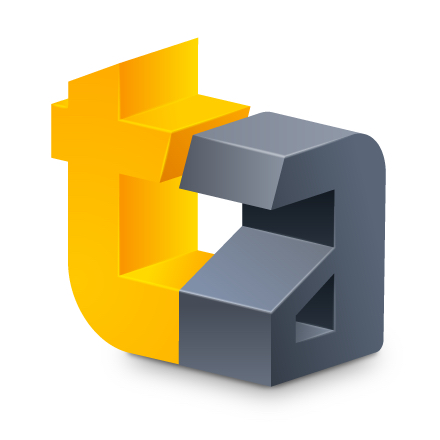 Hello, gentle readers, and welcome to the RPG Reload, your destination for all things mobile RPG. In addition to the other kinds of articles you’ll find under this banner, I’ll also occasionally be writing not about specific games, but about a topic connected to mobile RPGs. This week is one such installment. We’re taking a look at an interesting phenomenon that has started to occur with increasing regularity in the Japanese gaming market. Mobile gaming has long since overtaken the other gaming markets in Japan, and the result is that a lot of the most popular modern gaming IPs have their origins in the mobile market. We’re all used to seeing cherished old console franchises trotted out wearing free-to-play skins on mobile, but in Japan, the opposite case is beginning to happen. This article will take a look at some of the most famous examples, with a little extra analysis on the sales performance of those games and the possible motivations behind creating them.
Hello, gentle readers, and welcome to the RPG Reload, your destination for all things mobile RPG. In addition to the other kinds of articles you’ll find under this banner, I’ll also occasionally be writing not about specific games, but about a topic connected to mobile RPGs. This week is one such installment. We’re taking a look at an interesting phenomenon that has started to occur with increasing regularity in the Japanese gaming market. Mobile gaming has long since overtaken the other gaming markets in Japan, and the result is that a lot of the most popular modern gaming IPs have their origins in the mobile market. We’re all used to seeing cherished old console franchises trotted out wearing free-to-play skins on mobile, but in Japan, the opposite case is beginning to happen. This article will take a look at some of the most famous examples, with a little extra analysis on the sales performance of those games and the possible motivations behind creating them.
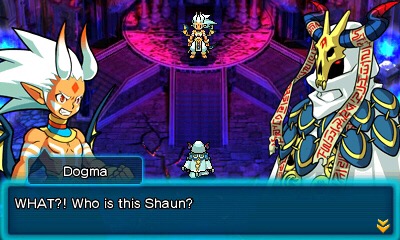
There are no two ways about it: the console market is in a real pinch in Japan. But that’s not a new thing. Signs of a market downturn in home consoles were perceptible in the region as early as the PlayStation 2 era, when the console and its software sales cooled down a lot quicker than it did in other regions. The Nintendo Wii rode a wave of goodwill off the back of the Nintendo DS, with a pinch of Nintendo nostalgia helping it along, but that burst proved to be short-lived. Since then, the console market has just sort of limped along. Neither the Wii nor the PlayStation 3 could manage even 70% of the sales of the Super Famicom, let alone the booming sales of Nintendo’s 8-bit Famicom or Sony’s first two PlayStation consoles. The Wii U couldn’t even pass the SEGA Megadrive’s total, and the PlayStation 4 only recently nudged ahead of the Gamecube’s total. We won’t even talk about Microsoft’s dismal fortunes with their Xbox consoles. With some luck, the first-place console in Japan this generation might be able to outsell the SEGA Saturn’s total. Maybe.
While the console market was falling, the already-healthy handheld market was soaring. The Game Boy had already been the highest-selling gaming device in the history of the country, but it would soon be topped by the stunning success of the Nintendo DS. The PSP, which was seen by many around the world as a sales dud, ended up with a total within a stone’s throw of those of the PlayStation 1 and PlayStation 2. In fact, the PSP is currently the sixth best-selling piece of gaming hardware of all-time in Japan, and it seems very unlikely to be unseated in the future. If you ever find yourself wondering where Japanese developers went during the PS3/360/Wii generation, the answer is that they were focusing on the 50+ million domestic handheld owners rather than the 20+ million domestic console owners. Handheld gaming has always resonated well with Japan, which is not terribly surprising given much of the country’s reliance on train travel and the relatively smaller living spaces.

Similarly, mobile gaming caught on quite quickly in Japan. While North Americans were fussing around with variants of Snake and other simple games, the Japanese were enjoying new Final Fantasy mobile games, ports of classic Super Famicom games like ActRaiser, and other such efforts. The rise of smartphones had a similarly potent effect on the mobile gaming market in Japan as it did everywhere else, but unlike in other regions, many Japanese publishers already had teams put together and games budgeted. It took a couple of years to really get cooking, but once it did, smartphone gaming absolutely exploded in Japan.
Unfortunately, that had a predictable effect on the handheld market. Nintendo’s 3DS had a rocky start but has pulled itself to a respectable total, currently sitting in the position of third place in the highest-selling game devices of all-time in Japan. Even as successful as it has been, the 3DS’s sales are down 50% from its predecessor. The drop from the PSP to the PlayStation Vita was even more precipitous. While the Vita has been more successful in Japan than it has been elsewhere, it’s unlikely that it will sell even a third of what its pappy did by the time it’s put out to pasture. That said, the handheld market still represents nearly 30 million players in Japan, which is certainly not a market you want to ignore.
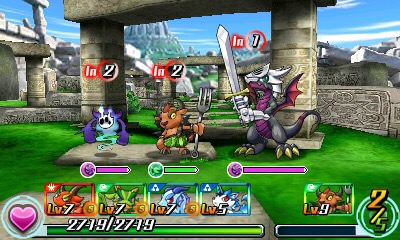
But let’s swing back to smartphones for a second. In the early days, the playing field was dominated by the usual names, more or less carrying on as they had been elsewhere. Lots of premium games from popular franchises, handheld-like downgraded ports, and the odd original title from household names like Konami, Capcom, and Square Enix. By now, these companies had their routines down to something of a science, but I believe it was precisely that complacency that left them scrambling when the mobile market made its heavy pivot towards free-to-play. Perhaps underestimating the appeal of such payment models, the console giants kept on sipping their drinks as the premium house burnt around them. This left the burgeoning free-to-play market to relatively fresh faces, many of whom had migrated over from browser games and social networks. Some, like DeNA Mobage, licensed existing brands to help give their efforts a little extra appeal, but most of these publishers had to start from scratch.
It took a little while, but some of these new brands caught on in a very big way. You would be hard-pressed to find a young Japanese person who hasn’t at least heard of GungHo’s Puzzle & Dragons or Mixi/XFLING’s Monster Strike. Cygames has had lightning strike twice, first with Rage of Bahamut and again with Granblue Fantasy. Even some old faces have found success under new names, with games like Terra Battle from Mistwalker, the studio founded by Final Fantasy creator Hironobu Sakaguchi. The old kings like Square Enix, SEGA, and Capcom are left trying to play catch-up with these new kids, finding more stability and safety in their traditional markets. But you know, no one in Japan is ignoring mobile. It’s too big to ignore. There’s money on the table waiting to be made. Even Nintendo sees that.
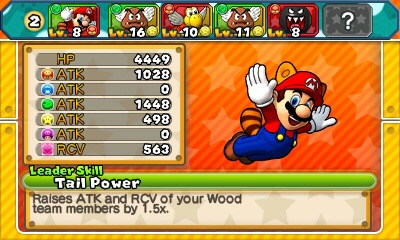
Here’s the thing, though. For those companies who have built themselves up in the mobile market, those 30 million handheld owners are also money on the table waiting to be made. The lucrative kids demographic is gaining access to smart devices at an earlier age all the time, but there are still plenty of children whose parents understandably don’t want to put a $500-1000 supercomputer in the sticky hands of a grade-schooler. Why wouldn’t those kids like Puzzle & Dragons just as much as anyone else? But simply porting the games over directly is of questionable value. The 3DS (and the Vita) weren’t really built for microtransactions in the same way smartphone apps are. Anyone who has played Pokemon Shuffle on both mobile and 3DS can tell you what a pain in the neck the latter can be if you’re making semi-frequent purchases. Plus, the handheld market still shows reasonable support for full-priced retail games. So why not do as the Romans do?
I’m not surprised it was GungHo that took the first step. I’ve talked a lot about the big mobile successes coming from publishers with little prior experience in the traditional gaming market, but that doesn’t quite fit when we’re talking about GungHo. The company is relatively new and has its roots in social networking, but its 2004 partnership with (and eventual acquisition of) Game Arts added a lot of experience in the traditional gaming market to GungHo’s pool. So when GungHo revealed at a fan festival in May of 2013 that Puzzle & Dragons would be getting a 3DS spin-off, it seemed like less of a shock and more of an inevitability.

Titled Puzzle & Dragons Z, the game released in Japan on December 12th, 2013. It’s an interesting example of how one might change a game built entirely around monetization through microtransactions into a full-priced, done-in-one experience. GungHo basically took the puzzle combat and team-building mechanics and dropped them into a Pokemon-inspired RPG. They also adopted the mobile version’s method of portraying dungeons, so you won’t be doing much exploring. The infamous gacha random draw system for getting new monsters has been largely removed, with enemy drops picking up the slack. Things like daily dungeons and events are handled through a separate NPC, and on the whole, it’s a lot easier to build up and evolve your party. The story is pretty dull, and you can tell they were angling for a multimedia thing with the inclusion of an “adorable" sidekick monster. It’s also kind of easy. One gets the impression that the game was designed for very young kids, without much of a budget put into it. That’s fair. It’s not like anyone knew how it would go.
It went very well, though. The game ended up selling over 1.5 million copies in Japan, which is quite impressive for a 3DS game without any prior base on the platform. Now, that’s spit in the bucket compared to the money the mobile version brings in, but it’s not bad money on its own, and there are a few other benefits to the game’s existence, besides. Around this time, the first real rival to Puzzle & Dragons hit mobiles in Japan. Monster Strike had the weight of veteran Capcom director Yoshiki Okamoto and Mixi, Japan’s own homegrown answer to Facebook, behind it. The game came out of the gates hard and still maintains a high ranking in the Japanese App Store more than three years later. Unlike GungHo, Mixi hadn’t done any console games before, but I’m quite sure they noticed the success of Puzzle & Dragons Z as well as anyone did.
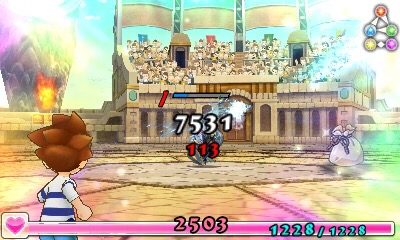
Before we get to Mixi’s effort, though, we have to go back to GungHo again. The mobile version of Puzzle & Dragons was no stranger to cross-promotions and collaborations, having played host to characters like Batman, the Angry Birds, Cloud Strife and Sephiroth, and more over the years. For their 3DS follow-up, they went for one of the biggest team-ups of all: Super Mario himself. While Puzzle & Dragons Z had been a success, I suspect GungHo had hoped for it to catch on in a more sustained way. It was set up like an RPG and sold like most of them do, with concentrated sales in the first few weeks and a massive drop-off after. The announcement of Puzzle & Dragons: Super Mario Edition in early 2015 felt like a reply to that.
Initially released in Japan on April 29th, 2015, Puzzle & Dragons: Super Mario Edition cuts away much of the extra fluff found in Puzzle & Dragons Z, leaving a stage-based experience that focused on the strengths of the original game. The whole thing was draped in a New Super Mario Bros. aesthetic, with the recruitable characters all being drawn from the Mario universe. Unfortunately, they didn’t draw terribly deeply. Nintendo seems to be shy about using content from the various Mario RPGs, and it’s too bad because this game really could have used a greater variety of enemies and characters. It’s also bizarrely difficult. Unless you’re a real pro at shuffling pieces around, you probably won’t reach the end of the game. You might not even get halfway there. As before, the gacha elements are almost entirely out, with random drops and items from question blocks greasing the gears instead.
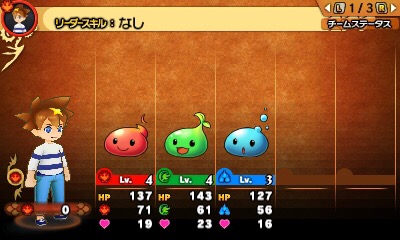
While Japanese players had to buy these games separately, the rest of the world got a bundle with both Puzzle & Dragons 3DS games for one low price. Released on May 22, 2015, it remains the only instance of this sort of game getting a worldwide release. Puzzle & Dragons Z got a lively localization that makes it a bit more enjoyable for older players, while Puzzle & Dragons: Super Mario Edition stayed more or less as-is. While GungHo was probably hoping to reach a wider audience from these releases, neither the stand-alone Japanese Puzzle & Dragons: Super Mario Edition nor the overseas bundle sold all that well. We could speculate for days as to why, but I think the product wasn’t a good fit for the platform or the audience it was aimed at. If I want to play straight-up Puzzle & Dragons, it’s far easier to do that on my phone. Plus, I get a much greater variety of characters and a massive, nearly never-ending amount of content, all for the price of free. Even Mario can’t make up for that, especially if he’s too busy smacking me in the head with a claw hammer to make sure I’m having fun.
Later in 2015, Mixi finally tossed its hat into the 3DS ring with the release of Monster Strike for 3DS. Part of a media blitz that also involved an anime, Monster Strike 3DS is a relatively high budget game compared to GungHo’s efforts. With full 3D graphics, plenty of areas you can walk around and explore in, and a design sense that owes more to Persona than Pokemon, it feels like the game is aimed at a slightly older crowd. Like Puzzle & Dragons, it largely carries over its battle and party building mechanics without many changes. It even retains its gacha system, though you obviously can’t pay real money to get the needed currency. Japanese retailers must have been expecting big things, because the game shipped one million copies at launch. It sold through about half of those in the first week, but the fact that I was able to pick up a sealed copy of the game for under $9.99 suggests that the rest of those copies didn’t move quite so well. Still, selling several hundred-thousand is nothing to sneeze at, particularly for a company that had literally no prior experience in that end of the business.
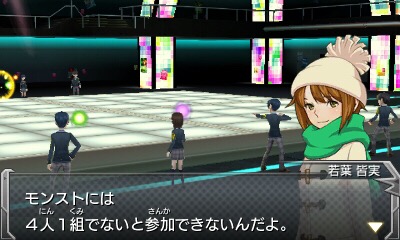
For GungHo’s next 3DS release of Puzzle & Dragons, they went back to what had worked for them with Puzzle & Dragons Z. Channeling Pokemon even harder, Puzzle & Dragons X released on July 28th, 2016 in two versions, Medal of the Gods and Medal of the Dragon. This time, GungHo changed quite a few things in the conversion. The basic rules are the same, but your character takes a much more active role in the battles. There’s some real exploration, and the game is presented in polygonal graphics rather than sprites. It feels like a much bigger and more confident effort from GungHo, and is easily the best of the bunch that I’ve talked about here. Unfortunately, though the quality of the game is high, the sales didn’t correspond. The first week of sales for the game were less than a fifth of the first game’s, which makes me wonder if GungHo is going to bother doing another one of these. I suspect the Switch is going to be more microtransaction-friendly, so they might just put the mobile version on there and call it a day. I suppose we’ll see.
Before you think the idea is being packed in, however, I have to point to two very big future projects along similar lines. In August of 2016, Cygames announced that they would be working with the amazing Platinum Games to create Granblue Fantasy Project Re: Link, a full-scale console game set in the world of the popular social RPG. With the talent involved, I have faith it will actually release and probably be at least a decent game. I’m not so sure about the next one. Mistwalker announced quite some time ago that they were making a console game based on Terra Battle, but we haven’t seen much out of it so far, and news has been sparse. It’s apparently still happening, but who knows when we’ll see it and what form it will be in.
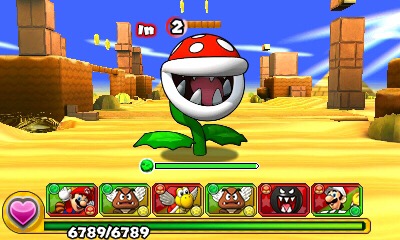
Now, it’s obviously nice for these publishers to earn some extra money, but as I mentioned earlier, the revenue potential on these releases is considerably smaller than what the mobile versions bring in. So why even make them? Wouldn’t it be better to invest that effort in a new free-to-play mobile game, or even just expanded content for the existing ones? There are lots of possible reasons for these releases beyond the up-front sales, I think.
First of all, it helps spread the brand out to new eyes. As Nintendo is finding out, giving people a taste of a franchise can often lead them right back to the source for more. I’m sure plenty of kids who played Puzzle & Dragons Z on their 3DS machines three years ago have moved on to the mobile version. These games also often serve the role of helping to prop up a multimedia blitz, letting fans of the TV show or comics see the characters go on new adventures. It’s quite common in Japan for toys, games, and TV shows to hit nearly simultaneously, and companies like Level-5 (Yo-Kai Watch, Inazuma Eleven) have made small fortunes from successes along this line.

These games are also a great way of reaching a younger audience who might not have access to a smart device yet. Maybe you can’t sell them IAP, but a customer is a customer, and they’re likely to migrate to the real version when they can. The existence of these games also serves as a shield for criticisms about targeting young people with IAP-heavy brands. If your kid is excited about Monster Strike but you don’t feel it’s ethical to get them hooked on a free-to-play game, you can buy them a complete package for their handheld without any of that messy stuff. This has become important over the last several years as the Japanese government has taken an increasing interest in the idea of regulating social RPGs. Releasing a handful of more traditionally-structured games is something of a show of good faith. It also scoops up customers who might have been interested in the concept but are opposed to microtransaction monetization models for whatever reasons.
Finally, it simply might be a matter of pride. Mobile gaming is great, but I know I’ve personally talked with a number of small developers who feel like their games are more “real" when they launch them on consoles. Of those that I’ve spoken with, the few that manage to get a physical release through efforts like Limited Run Games feel a certain sort of beaming pride at seeing the actual physical copy of their game sitting on a shelf. I wouldn’t be surprised if at least part of the purpose of these spin-offs is as a sort of vanity project.
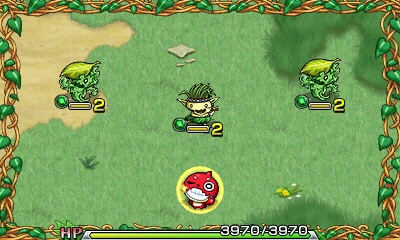
It’s worth mentioning, however, that outside of the maybe-existent Terra Battle, all of the games I’ve talked about are based on the absolute cream of the crop of mobile earners. It’s doubtful that lesser-known brands could meet with similar success by following this road. It’s also hard not to notice that the sales trajectory across these games is moving downwards. That could be due to the age of the 3DS, as it is certainly reaching its twilight years. But it might also be due to the fact that most families have so many smart devices that even the younger kids can probably get their hands on a hand-me-down capable of playing the free-to-play versions of the games. Only time will tell the story.
Anyway, I hope you enjoyed this look at the other side of the coin. We all know the feeling when a popular console brand is changed into a free-to-play title. It makes me wonder, though. If kids who spent the last few years playing the mobile Puzzle & Dragons are given the 3DS version, do they feel a similar sort of shock? Are they dismayed by the lack of virtually infinite content and events? Do they miss the gacha pulls, and the thrill that comes from getting a windfall of precious premium currency? I guess I’ll have to ask around and do a follow-up sometime.
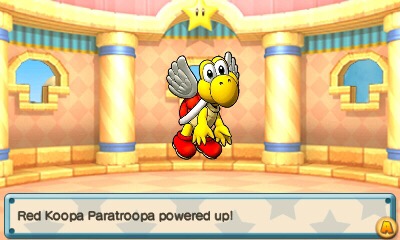
I’ll wrap things up this week by calling attention to the first RPG Reload Play-Along, which is entering its final week. It’s been an even bigger success than I had hoped, and it’s been amazing watching players of all skill levels and familiarity with Final Fantasy coming together to enjoy the game. There’s still time for you to start and maybe even finish, so drop in on the thread and get going! The February RPG Reload Play-Along will be announced next week in the RPG Reload, so you’d better start sharpening your swords. I don’t have any clever dice-rolling gimmicks for this next game, so I hope the popularity of the January Play-Along doesn’t cast too long of a shadow over the next. Please remember, the RPG Reload column is only possible through the generous support of our Patreon backers. If you can, and you feel we’re worth it, please head on over to our page and subscribe.
To all you brave Reloaders, thanks for reading, and see you next week!
Next Week’s Reload: The February RPG Reload Play-Along